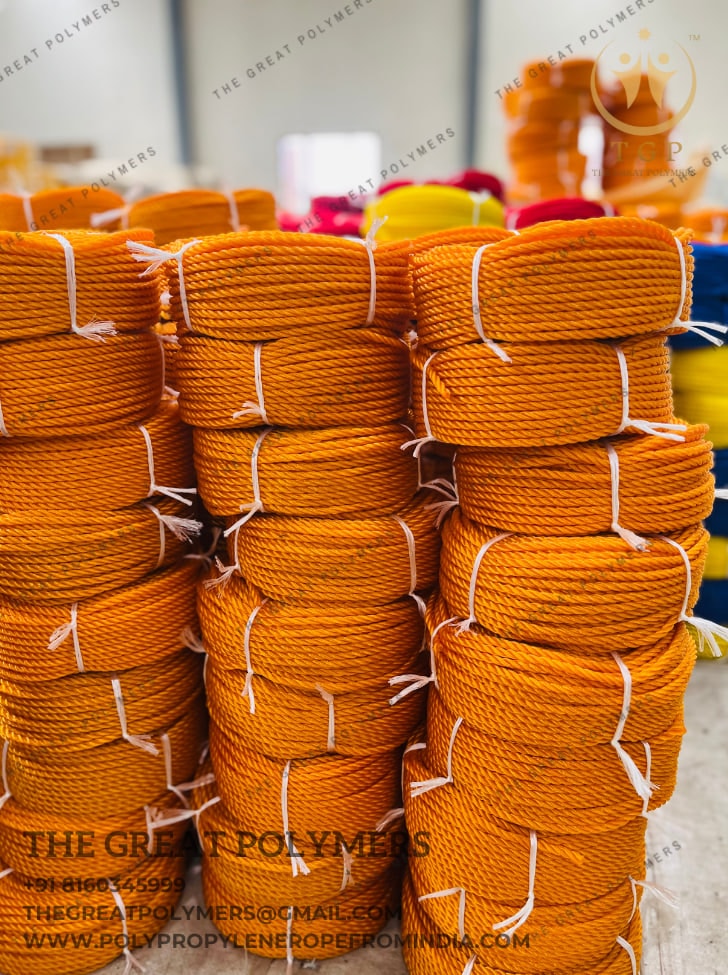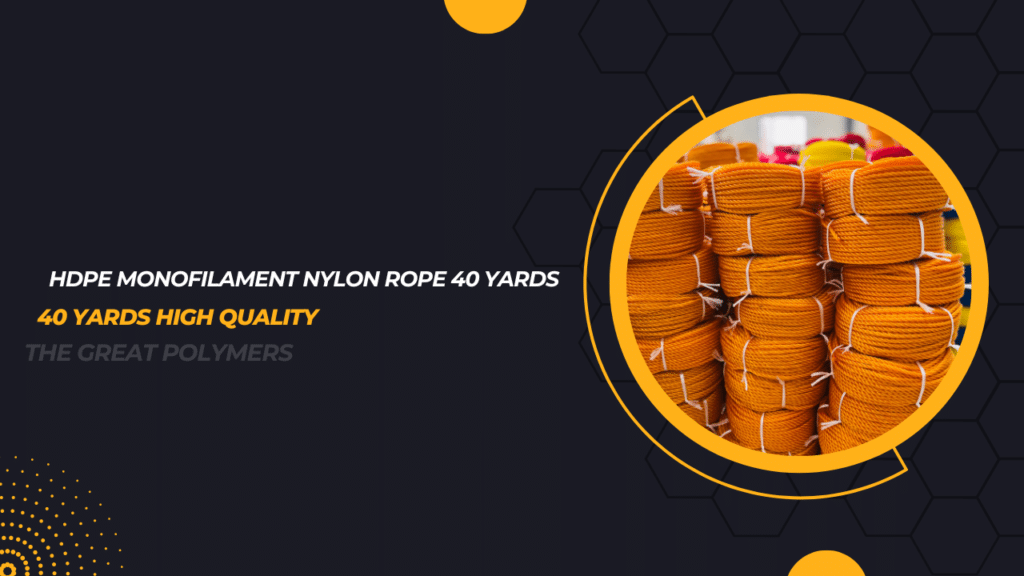Introduction to HDPE Monofilament Nylon Rope
HDPE monofilament nylon rope, renowned for its strength and versatility, is a popular choice in various industries and recreational activities. This guide delves into the unique properties, applications, and benefits of HDPE monofilament nylon rope, providing valuable insights for both professionals and enthusiasts.
What Makes HDPE Monofilament Nylon Rope Unique?
Durability
HDPE monofilament nylon rope boasts exceptional durability, capable of withstanding harsh environmental conditions and heavy loads without compromising its integrity. Whether used in marine settings, construction sites, or outdoor adventures, this rope is designed to endure.
Strength
One of the primary reasons for the popularity of HDPE monofilament nylon rope is its impressive strength-to-weight ratio. Despite being lightweight, it offers remarkable tensile strength, making it suitable for demanding tasks such as towing, lifting, and securing heavy equipment.
Versatility
From marine applications to agricultural tasks, HDPE monofilament nylon rope proves its versatility across various industries. Its flexibility and resistance to abrasion make it an ideal choice for rigging, netting, and general-purpose use, ensuring reliable performance in diverse settings.
Applications of HDPE Monofilament Nylon Rope
Marine Use
In the maritime industry, HDPE monofilament nylon rope is prized for its resilience against saltwater corrosion and UV degradation. It serves multiple purposes onboard vessels, including mooring, anchoring, and towing, providing sailors with peace of mind during their maritime endeavors.
Camping and Outdoor Activities
Outdoor enthusiasts appreciate the durability and knot stability of HDPE monofilament nylon rope, which enhances safety and convenience during camping trips, hiking excursions, and recreational adventures. Whether used for setting up shelters, securing gear, or crafting makeshift tools, this rope proves indispensable in the great outdoors.
Industrial Purposes
In industrial settings, HDPE monofilament nylon rope finds applications in construction, transportation, and manufacturing processes. Its ability to withstand heavy loads and harsh conditions makes it a reliable choice for lifting, hauling, and securing equipment, contributing to operational efficiency and workplace safety.
Agriculture
Farmers and agricultural workers rely on HDPE monofilament nylon rope for various tasks, including fencing, livestock handling, and crop support. Its resistance to rot, mildew, and chemicals ensures long-term performance in agricultural environments, where exposure to moisture and organic matter is common.

Key Features of HDPE Monofilament Nylon Rope
Weather Resistance
HDPE monofilament nylon rope excels in outdoor environments, thanks to its resistance to moisture, sunlight, and temperature fluctuations. Whether exposed to rain, snow, or intense sunlight, this rope maintains its strength and integrity, ensuring reliable performance in any weather condition.
Abrasion Resistance
The rugged construction of HDPE monofilament nylon rope enables it to withstand abrasion and friction, minimizing wear and tear during use. This feature is particularly valuable in applications where the rope comes into contact with rough surfaces or sharp edges, ensuring longevity and durability.
Knot Stability
When tied into knots, HDPE monofilament nylon rope maintains excellent stability and security, preventing slippage or unraveling. This characteristic is crucial for safety-critical applications where the integrity of knots is essential, such as climbing, rescue operations, and load securing.
Factors to Consider When Choosing HDPE Monofilament Nylon Rope
Diameter and Length
HDPE monofilament nylon rope is available in various diameters and lengths to suit different applications and preferences. When selecting the appropriate rope size, consider the intended use, load requirements, and space constraints to ensure optimal performance and usability.
Weight Capacity
Before using HDPE monofilament nylon rope for lifting or towing tasks, verify its weight capacity and load-bearing capabilities to prevent overloading and potential safety hazards. Be sure to factor in dynamic loads, shock forces, and environmental conditions to determine the suitability of the rope for specific applications.
UV Resistance
For outdoor applications exposed to sunlight, choose HDPE monofilament nylon rope with UV-resistant properties to prevent premature degradation and discoloration. UV-stabilized ropes are designed to withstand prolonged exposure to sunlight without losing strength or structural integrity, ensuring long-term performance in outdoor settings.
Color Options
HDPE monofilament nylon rope is available in various colors, allowing users to differentiate between different rope lengths, applications, or ownership. Selecting brightly colored ropes enhances visibility and safety, especially in low-light conditions or crowded environments, reducing the risk of accidents or confusion.
Maintenance Tips for HDPE Monofilament Nylon Rope
Cleaning
Regularly clean HDPE monofilament nylon rope with mild detergent and water to remove dirt, salt, and debris accumulated during use. Rinse thoroughly and allow the rope to air dry completely before storing to prevent mold or mildew growth.
Storage
Store HDPE monofilament nylon rope in a dry, well-ventilated area away from direct sunlight, moisture, and extreme temperatures. Coil or hang the rope loosely to prevent kinks, twists, or deformation, prolonging its lifespan and usability.
Inspection
Periodically inspect HDPE monofilament nylon rope for signs of wear, damage, or degradation, such as fraying, discoloration, or stiffness. Replace any compromised sections or retire the rope if it exhibits significant structural flaws or safety concerns to prevent accidents or injuries.
Comparing HDPE Monofilament Nylon Rope with Other Materials
Polyester Rope
Compared to polyester rope, HDPE monofilament nylon rope offers superior strength, flexibility, and abrasion resistance, making it suitable for demanding applications where durability and reliability are paramount. While polyester rope may have better UV resistance, HDPE monofilament nylon rope excels in harsh environments and heavy-duty tasks.
Polypropylene Rope
While polypropylene rope is lightweight and affordable, it lacks the strength, durability, and weather resistance of HDPE monofilament nylon rope. HDPE monofilament nylon rope outperforms polypropylene rope in applications requiring load-bearing capacity, abrasion resistance, and longevity, making it a preferred choice for professional and recreational use.
How to Properly Use HDPE Monofilament Nylon Rope
Knot Tying Techniques
Learn and practice essential knot tying techniques to secure HDPE monofilament nylon rope effectively. Common knots such as the bowline, clove hitch, and figure-eight knot provide reliable attachment points for various applications, ensuring safety and stability during use.
Load Distribution
When using HDPE monofilament nylon rope for lifting or towing tasks, distribute the load evenly across multiple attachment points to prevent strain or overload on individual sections of the rope. Use rigging hardware such as pulleys, shackles, and slings to optimize load distribution and minimize stress on the rope.
Safety Measures
Prioritize safety when handling HDPE monofilament nylon rope, especially in high-risk environments or applications. Wear appropriate personal protective equipment, inspect the rope regularly for signs of damage or wear, and follow industry best practices and safety guidelines to minimize the risk of accidents or injuries.
HDPE Monofilament Nylon Rope: A Sustainable Choice
HDPE monofilament nylon rope stands out as a sustainable choice due to its recyclability and longevity. Unlike single-use plastics or disposable materials, this rope can be recycled and repurposed at the end of its service life, reducing environmental impact and promoting resource conservation.
Cost-Effectiveness of HDPE Monofilament Nylon Rope
While HDPE monofilament nylon rope may have a higher initial cost compared to other materials, its durability, longevity, and performance justify the investment over time. By minimizing the need for frequent replacements and repairs, this rope offers long-term cost savings and operational efficiency in various applications.
Common Misconceptions About HDPE Monofilament Nylon Rope
Despite its many benefits, HDPE monofilament nylon rope is sometimes subject to misconceptions and myths. Common misconceptions include concerns about its stiffness, weight, and compatibility with certain applications. In reality, modern HDPE monofilament nylon rope is engineered to be lightweight, flexible, and versatile, addressing these concerns and delivering exceptional performance in diverse settings.
Where to Purchase HDPE Monofilament Nylon Rope
HDPE monofilament nylon rope is available from a wide range of suppliers, including hardware stores, marine retailers, and online distributors. When purchasing HDPE monofilament nylon rope, consider factors such as diameter, length, strength rating, and manufacturer reputation to ensure you select the right product for your needs.
Customer Reviews and Testimonials
Customers praise HDPE monofilament nylon rope for its durability, strength, and reliability in various applications. Positive reviews highlight its performance in marine environments, outdoor adventures, construction projects, and agricultural tasks, emphasizing its value as a versatile and dependable rope solution.
Conclusion
HDPE monofilament nylon rope emerges as a superior choice for professionals and enthusiasts seeking strength, durability, and versatility in their ropes. With its exceptional performance in diverse applications, weather-resistant properties, and sustainable credentials, this rope sets the standard for quality and reliability in the industry.
FAQs
- Is HDPE monofilament nylon rope suitable for marine use?
- Yes, HDPE monofilament nylon rope is highly suitable for marine applications due to its resistance to saltwater corrosion and UV degradation.
- Can HDPE monofilament nylon rope be used for lifting heavy loads?
- Absolutely, HDPE monofilament nylon rope offers impressive strength and weight-bearing capacity, making it ideal for lifting and towing tasks in various industries.
- How should I store HDPE monofilament nylon rope when not in use?
- Store HDPE monofilament nylon rope in a dry, well-ventilated area away from direct sunlight and moisture, coiling or hanging it loosely to prevent kinks and deformation.
- Does HDPE monofilament nylon rope require any special maintenance?
- Regular cleaning and inspection are recommended to ensure the longevity and performance of HDPE monofilament nylon rope. Use mild detergent and water for cleaning, and inspect the rope for signs of wear or damage periodically.
- Is HDPE monofilament nylon rope environmentally friendly?
- Yes, HDPE monofilament nylon rope is a sustainable choice due to its recyclability and long service life, minimizing environmental impact and promoting resource conservation.


